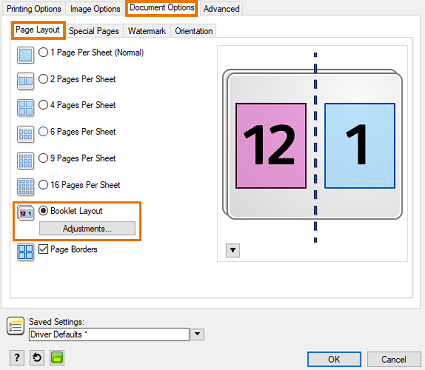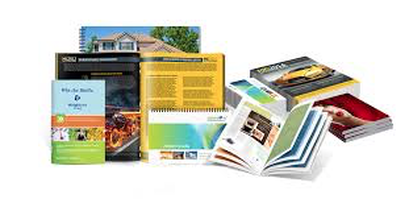7 Must-Know Tips for Affordable Booklet Printing Solutions
7 Must-Know Tips for Affordable Booklet Printing Solutions
Blog Article
The Vital Guide to Comprehending Brochure Printing Options and Techniques
The procedure of brochure printing involves multiple considerations that can considerably influence the end product. From picking the appropriate format and dimension to understanding the nuances of binding methods, each selection plays an important function. Additionally, variables such as paper stock and printing techniques additional influence the performance of the brochure. As one browses these choices, it ends up being critical to realize how they adjoin and what that indicates for the total outcome.
Recognizing Pamphlet Sizes and layouts
When thinking about pamphlet printing, comprehending the various formats and dimensions offered is necessary for attaining the preferred discussion. Pamphlets can be produced in many styles, including saddle-stitched, spiral-bound, and perfect-bound, each offering unique advantages. Typical sizes vary from typical letter (8.5 x 11 inches) to smaller sized options like A5 (5.8 x 8.3 inches), enabling for versatility based on web content and target audience.Selecting the proper dimension can affect both the layout and visitor interaction. Bigger dimensions could suit visually driven material, while smaller sized layouts may be more mobile and user-friendly. Additionally, the number of pages impacts the choice of binding technique, as thicker brochures might require stronger bindings. Eventually, understanding these facets allows for a much more customized approach, making certain that the final product lines up with the desired message and visual, enhancing the general effectiveness of the communication.
Selecting the Right Paper Supply

Binding Techniques: Choices and Factors To Consider
When it comes to binding approaches for brochures, a number of choices are available, each with distinctive benefits. Saddle stitch binding offers an economical solution for thinner booklets, while perfect binding methods offer a more polished appearance for thicker publications. Wire-O binding stands apart for its resilience and ease of use, making it optimal for files that need versatility.
Saddle Stitch Binding
Saddle stitch binding uses a practical and economical option for putting together pamphlets, making it a preferred choice amongst businesses and authors. This binding method entails folding sheets of paper in half and stapling them along the fold line, producing a well organized and neat appearance. Generally ideal for pamphlets with a reduced web page matter, saddle sewing is excellent for magazines, pamphlets, and training products. The simplicity of this strategy enables fast production and is often favored for promotional things or brief runs. It is important to note that saddle stitch binding might not be appropriate for thicker pamphlets, as the spine might not hold up under boosted weight. Generally, it continues to be a reliable alternative for numerous printing jobs.
Perfect Binding Techniques
Perfect binding is a widely made use of method that supplies a specialist and refined surface to publications and pamphlets. This method includes gluing the web pages together at the spinal column making use of a strong adhesive, enabling for a clean side and the ability to hold a bigger number of web pages compared to saddle sewing. Perfect binding is particularly appropriate for thicker pamphlets, such as magazines and yearly reports, where a strong, flat back is wanted. Furthermore, it offers the choice for a printed cover that can be made to enhance aesthetic appeal. However, considerations such as web page count, paper weight, and the meant usage of the pamphlet need to be taken into account, as they can influence durability and overall quality.
Wire-O Binding Alternatives
Wire-O binding, recognized for its longevity and flexibility, offers an outstanding option for pamphlets that need very easy page transforming and an expert look. This binding technique employs a collection of metal loopholes that hold pages securely, allowing them to exist level when open. It is especially suitable for guidebooks, directories, and discussions as a result of its robust nature. Wire-O binding is readily available in numerous shades and sizes, suiting various web page matters and densities. Furthermore, it permits the incorporation of covers and tabs, improving the booklet's general aesthetic. Factors to consider for Wire-O binding consist of the choice of cord shade, the size of the loops, and the extent of customization wanted, every one of which can exceptionally influence the final product's appearance and capability.
Digital vs. Offset Printing: Which Is Best for You?
When choosing a printing technique for pamphlets, understanding the differences in between digital and balance out printing is crucial. Digital printing utilizes contemporary technology to produce top quality prints promptly and affordably, making it perfect for brief runs or jobs needing fast turnaround times. It permits personalization, providing the capacity to publish on-demand with marginal waste.In comparison, counter printing is a conventional method that stands out in creating large amounts with consistent quality. It includes moving ink from a plate to a rubber blanket, after that to the paper, which causes specific details and vivid colors. Offset printing typically needs longer arrangement times and is a lot more cost-effective for bigger volumes.Ultimately, the choice in between electronic and counter printing depends on job needs, spending plan, and wanted quantity. For small, time-sensitive jobs, electronic might be the very best choice, while balanced out may be more suitable for larger, premium productions.

Designing Your Brochure: Tips and Ideal Practices
When designing a brochure, careful attention to format, typeface selection, and shade usage can significantly enhance its efficiency. A well-structured design guides the reader's eye, while appropriate fonts ensure readability and convey the desired tone. Additionally, effective use of color can stimulate feelings and highlight essential details, making the total design a lot more impactful.
Selecting the Right Layout
Just how can one effectively select the ideal design for a brochure? Initially, it is important to examine the pamphlet's objective and target audience. A tidy, organized layout improves readability and involvement. Utilizing a grid system can assist in straightening elements continually, producing a professional look. In addition, including aesthetic power structure through varying dimensions and placements of pictures and text can guide the viewers's eye and highlight vital info. It is also crucial to leave sufficient white space, which avoids overcrowding and permits far better focus. Examining various layouts through mock-ups can supply understanding right into just how the design carries out in real-world situations, making certain that the last product meets both aesthetic and practical requirements. Useful Picking Appropriate Fonts
A well-chosen font can significantly improve the overall design of a brochure, complementing the layout and reinforcing the content's message. The choice of fonts should consider readability, especially for body text, as it assures the details is easily accessible to all viewers. Sans-serif typefaces are usually favored for electronic styles, while serif typefaces can lend a traditional feeling in published materials. It's recommended to limit font selections to 2 or 3 to preserve visual coherence. In addition, typeface size plays a crucial function; headings must be not frustrating however unique, while body text should fit for reading. When selecting fonts, placement with the booklet's theme and target market is necessary for reliable communication and aesthetic allure.
Efficient Use Color
Shade offers as an effective tool in pamphlet style, forming understandings and assisting viewers feelings. It can stimulate sensations of peace, count on, or exhilaration, depending upon the shades selected. Developers must take into consideration shade concept principles, guaranteeing that the picked scheme straightens with the booklet's message and target market. Making use of cozy shades like red and orange can create urgency, while cooler tones like environment-friendly and blue foster tranquility.Additionally, contrast plays an essential function; complementary colors can improve readability and aesthetic appeal. Consistency in color usage across pages better enhances brand identity and communication. Eventually, effective shade application not only records attention however additionally strengthens the booklet's purpose, making it a necessary facet of successful style.
Finishing Touches: Coatings and Special Effects
While numerous take into consideration the important link material and format of a booklet one of the most critical elements, the ending up touches, such as finishes and special effects, play an essential function in improving its overall appeal. Coatings can provide defense and longevity, making sure that the booklet stands up to damage. Matte coatings use an innovative, non-reflective surface, while shiny layers can make colors show up even more captivating and vibrant. Unique results, like embossing or foil stamping, add a tactile dimension that can develop an unforgettable impact. These methods can highlight particular locations, accentuating essential information or producing aesthetic passion. Additionally, UV covering can offer a high-shine surface that boosts the overall look.Together, these completing touches not just boost the booklet's aesthetic but likewise communicate expertise and focus to information, inevitably leaving an enduring influence on the reader.
Cost Considerations for Pamphlet Printing
Recognizing the various expense factors to consider for booklet printing is vital for organizations and companies intending to maximize their budgets. Secret variables influencing expenses consist of the choice of ink, paper, and binding methods. Higher high quality materials, such as premium paper or specialized inks, generally raise the general cost. Additionally, the size and page matter of the brochure play a substantial duty; larger brochures need even more sources and time to produce.Another additional hints essential consideration is the printing strategy, whether digital or countered, as each has its very own prices structure and suitability for different quantities. Organizations ought to likewise factor in style expenses, which can vary based on complexity and using specialist solutions. Eventually, delivery and handling charges can add to the overall, particularly for huge orders. By reviewing these components, companies can make educated decisions find this that align with their financial capabilities while attaining the preferred top quality in their printed materials.
Frequently Asked Inquiries
What Are the Ecological Influences of Brochure Printing?
The environmental impacts of pamphlet printing consist of deforestation from paper production, carbon emissions from transportation, and waste generation from discarded materials - Booklet Printing. Lasting methods, such as using recycled paper and eco-friendly inks, can mitigate these results
Just How Can I Guarantee Color Precision in My Brochure?
To guarantee color precision in a pamphlet, one ought to utilize adjusted displays, use expert color accounts, carry out examination prints, and choose high-quality printing solutions that use color matching and proofing alternatives for finest outcomes.
What Is the Common Turnaround Time for Booklet Printing?
The normal turnaround time for pamphlet printing varies relying on the complexity and amount - Booklet Printing. Usually, it ranges from a couple of days to two weeks, affected by factors such as publishing methods and finishing requirements
Are There Minimum Order Quantities for Pamphlet Printing?

Can I Publish Brochures in Numerous Languages?
Printing brochures in several languages is feasible. Several printing solutions offer choices for multilingual or multilingual formats, permitting for reliable interaction. Careful preparation guarantees that develop aspects fit different languages without jeopardizing readability or looks. Additionally, variables such as paper stock and printing methods additional influence the efficiency of the booklet. When considering brochure printing, comprehending the different styles and sizes available is important for achieving the desired presentation. When picking a printing approach for brochures, comprehending the differences between electronic and balance out printing is crucial. In addition, the dimension and page count of the pamphlet play a considerable role; larger booklets call for more resources and time to produce.Another vital factor to consider is the printing method, whether electronic or balanced out, as each has its own rates framework and suitability for various quantities. The environmental influences of brochure printing include logging from paper production, carbon emissions from transport, and waste generation from discarded products.
Report this page